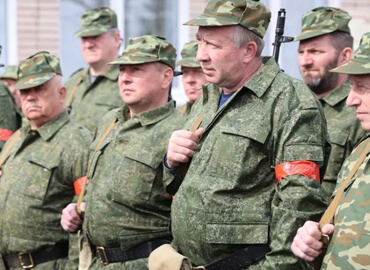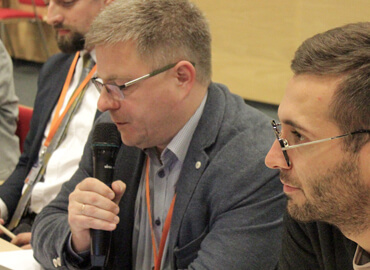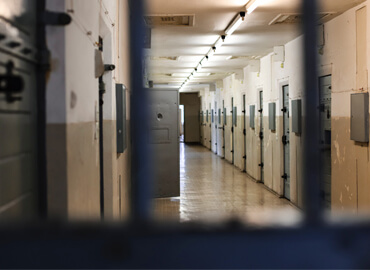In the contemporary era, where the meaning of historic events is increasingly muddled by “competing narratives”, the political crisis in Belarus offers the world a satisfying case of moral clarity. In his August 28, 2020 remarks in Vienna, the U.S. Deputy Secretary of State Stephen Biegun proclaimed, “It is clear to me—and I hope it is clear to all—that this is not a contest between east and west, and certainly not a contest between Russia and the United States; . . . this is a battle between a ruler and his own people.”
Indeed, the Coordination Council, established by the Belarus opposition on August 14, has been consistent and precise in its strategy to preserve this clarity. Throughout the entirety of the three weeks of the uprising, the Council and its supporters have been very creative in how they employed diverse forms of peaceful protests while avoiding violence and direct confrontation with Alexander Lukashenko’s security forces. As of August 30, the movement has carried out three massive Sunday marches, each of which has brought out between 100,000-200,000 citizens to the streets of Minsk, as well as smaller (though still impressive) daily mobilizations in between.
The Coordination Council has articulated a list of demands whose simplicity and brevity is the most potent force uniting disparate opposition groups and movements in Belarus and beyond:
- To free all political prisoners;
- To punish the perpetrators of violence and brutality in the immediate aftermath of the presidential election;
- To hold new elections.
The Coordination Council continues to assert publicly that it supports only peaceful actions; that it is against the takeover of buildings or clashes with law enforcement; and that it does not seek to establish any autonomous zones in Minsk.
Keeping things peaceful and clear has not been easy. The brutality of Lukashenko’s government unleashed between August 10-13 shook up the entirety of Belarusian society. Workers of the ten largest companies announced union action creating factory strike committees and a national strike committee; teachers and health workers organized mass pickets; and the head of the Belarusian Orthodox Church (a branch of the Moscow Patriarchy) apologized for his official congratulations to Lukashenko on his victory.
Between August 13-23, after his blitzkrieg had failed, Lukashenko attempted to address what he saw as his support base by visiting the city of Hrodna and speaking at key factories in Minsk. At the same time, he switched to targeted prosecutions, a tactic likely inspired by Vladimir Putin’s modus operandi in stamping out the Russian opposition. On August 23, during the second Sunday march in Minsk, Lukashenko staged “the defense of the Presidential Palace” by posing in front of state media TV crews clad in camouflage and brandishing weapons, flanked by special forces allegedly defending his residence. On August 27, he issued a statement saying that he had managed to “subvert the plans for the annexation of the Hrodna region by Poland”.
Under these circumstances, the Coordination Council is following the only effective strategy available. Its members assert that the Council is not a political organization and as such does not have a political agenda of its own. Its only explicit objective is Lukashenko’s departure from power and new elections in the interest of the entire Belarusian people. The protest’s spokespeople are careful to not frame the movement as pro-European nor as one that is seeking cooperation with Russia.
The strategic goal of the movement has been to jumpstart a political process that will lead to free presidential elections followed by the formation of a new parliament (National Assembly) that will have the legal authority to initiate further reforms. The Coordination Council does not promote any concrete ideas regarding further economic policy either. Sviatlana Tsikhanouskaya, the opposition candidate who contested Lukashenko’s official vote count and was forced into exile in Lithuania, has repeatedly stressed that she considers herself a “transitional leader”. Maria Kalesnikava has publicly refuted the suggestion that the Council pursues “Belarusization” and radical policies on language, history, and religion. The strategy of the Council is focused entirely on achieving the highest mobilization to force Lukashenko’s departure and ensuring new elections are held with monitoring by international observers.
The Council has been vehemently criticized for a perceived lack of a concrete plan and has been urged to force political change by direct confrontation. Shifting into a more forceful mode would, however, be a great mistake that would not only strip the movement of its universal appeal and moral stance, but also escalate the conflict, giving Putin the perfect excuse to get involved.
Lukashenko’s election campaign had been shaped to a great extent by his protracted standoff with Moscow. Putin’s long-standing disdain for the Belarus ruler is well-known. It plunged to new lows in late 2019, when Lukashenko rejected Putin’s “magnanimous” offer to join Russia in a Union State while preserving his personal rule within Belarus. Having not resolved key issues of contention with the Kremlin, Lukashenko structured his entire campaign leading up to the summer 2020 election around his role as a defender of Belarus from the Russian threat. Russian officials, in turn, have gone on record conceding that the elections were “poorly organized” and that the use of force against protestors was excessive. They have even called on Lukashenko to engage in a dialogue with civil society.
Today, Lukashenko, whose very survival is threatened by the domestic crisis, has done a 180 and is actively courting Russian involvement in Belarus. In August, he returned the Wagner Group mercenaries he had detained to Russia (contrary to his earlier promises to turn them over to Ukraine), which presumably reflects the outcome of behind-the-scenes negotiations between Moscow and Minsk. On August 15, Lukashenko had a call with Putin, who reportedly guaranteed him assistance in the event of a real threat to his power. By late August, Putin agreed to restructure the Belarusian debt leaving $1 billion at Lukashenko’s disposal. He has also announced that, at Lukashenko’s request, he has formed a reserve of law enforcement units that will be deployed in case of mass street riots, attacks on buildings, and looting. This was a strong message partially targeting the Belarusian law enforcement who may be weighing their own loyalties. Lukashenko is on the path to acknowledging Russia’s annexation of Crimea, becoming a subject of international sanctions, and thereby leading Belarus to join the ranks of pariah states next to Russia.
The events of the past few weeks have helped put lie to the allegations that some of Lukashenko’s opposition were being backed by the Kremlin. Since August 25, the Kremlin has been transparent in what it aims to achieve through engagement with Belarus: the current president stays in power, no new elections are called, and the Coordination Council is not recognized as a partner for dialogue. Four main vectors can be identified in Russia’s strategy in pursuit of these objectives:
- Ensure that European diplomacy abandons the idea of new presidential elections in Belarus;
- Change the membership of the Coordination Council and its position by discrediting its current leaders. Mobilize a group of pro-Russian politicians in Belarus who will engage in an active fight on the Kremlin’s side in case Lukashenko’s position is seriously shaken by prospects of his quick departure;
- Make sure Lukashenko remains inescapably beholden to Moscow;
- Use “brotherly support” to infiltrate Minsk with political and media consultants as well as with specialists in cybersecurity in order to establish control over the Belarusian state apparatus.
- In other words, Russia is taking advantage of Lukashenko’s many egregious missteps to deprive Belarus of its political sovereignty, turning it into a protectorate. This process amounts to a foreign coup that has already commenced and is taking place in plain view.
Needless to say, such attempts to erode the Belarusian people’s ability to realize a self-directed democratic transition may lead to intensification of the conflict that could consume the entire region, obliging Germany, France, and even the United States to undertake an urgent review of their political stance, economic policies and military posture. September 10, 2020 is a critical date when Lukashenko’s presidential term is set to expire. This also will be the likely start of new waves of mass repression and arrests, intensified brutality against the people of Belarus, the militarization of Belarus, and growing Russian control over the country.
Now is the time for the democratic world, and specifically, the United States, to decide what will be their response. At a minimum, by that date the United States must initiate an investigation of the August 10-13 government brutality against peaceful protesters; it must enact strong personal sanctions against a wide number of officials (similar to that proposed by the Lithuanian Ministry of Foreign Affairs), and it must provide strong diplomatic support to the EU in Brussels as it shapes European policy toward the Belorussian autocrat and his puppet master in the Kremlin. Anything less would be tantamount to serving as accomplices in this battle between people reclaiming their freedom and an oppressive regime.
This article is also available on The American Interest.










